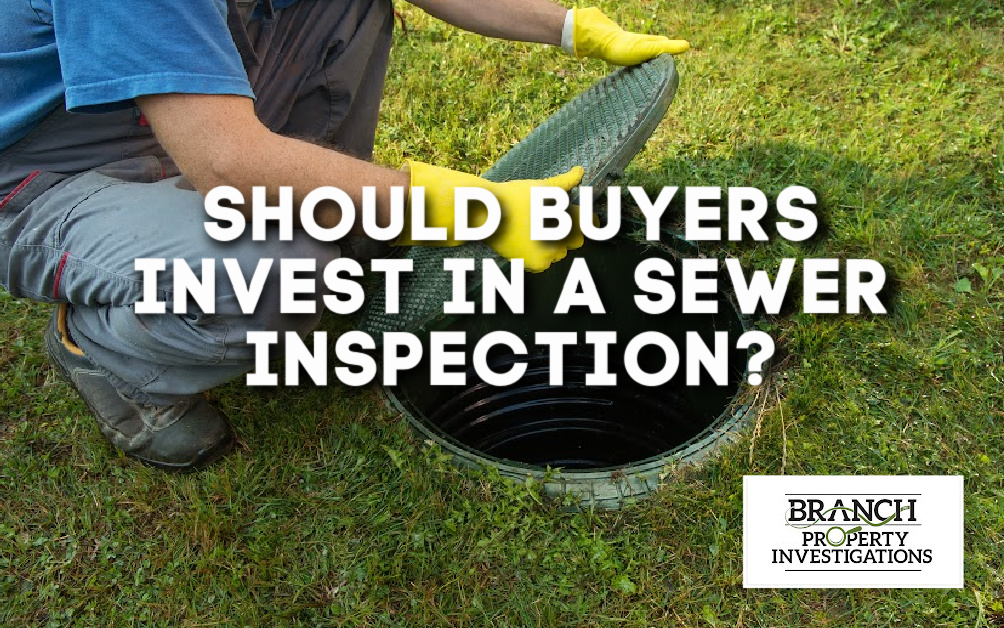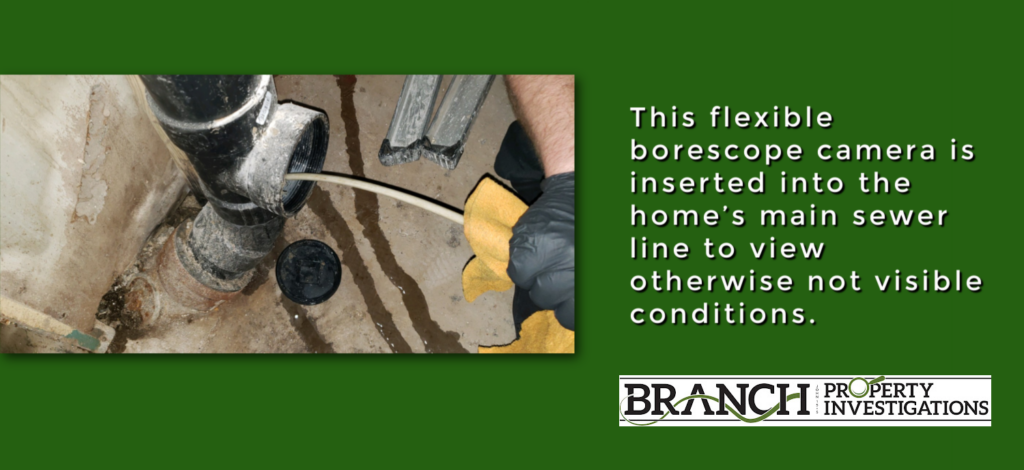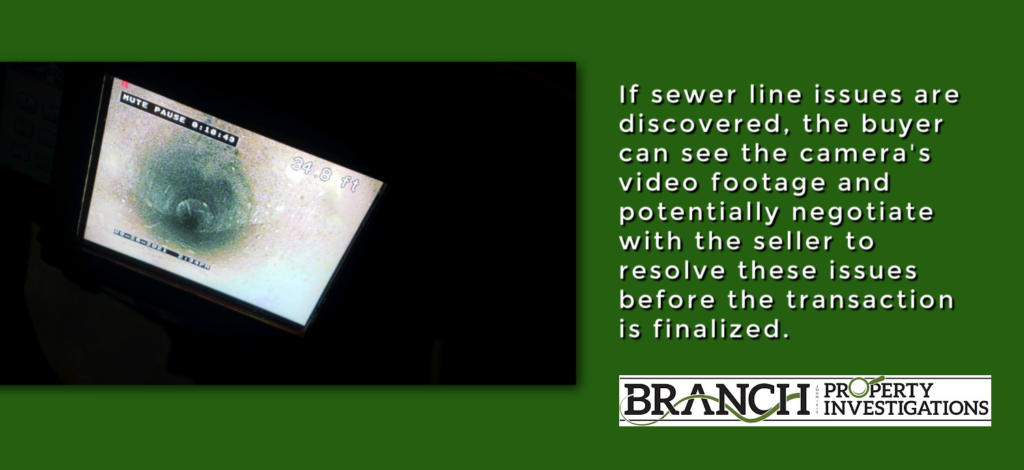A sewer scope inspection is one of the most often-overlooked inspections when purchasing a new home. It is not typically included in the cost of a standard home inspection so some buyers wonder if it’s really a necessary service. It’s certainly an additional expense, but a damaged sewer line can cost thousands of dollars to repair! Many realtors and buyers believe it’s a worthwhile investment during the purchase process.
Today we’ll help explain what our sewer inspection entails, when it’s most warranted, and some of the common limitations of a sewer inspection.
What is a Sewer Scope Inspection?
A professional inspector will insert a flexible borescope camera into the home’s main sewer line to view otherwise not visible conditions. The camera will then be guided into the sewer line, which drains the home’s wastewater into the sewer system. The inspector will be looking for cracks or other signs of damage, roots that have grown through the pipe, and other potential concerns. Your inspector narrates and video-records this process in order to provide you a comprehensive report of findings.
What Are The Signs I Need A Sewer Scope Inspection?
Any age home can have sewer problems. It’s more unlikely a newer home will have issues but it’s not impossible. As you would expect, the potential for problems increases with the age of the home. Large trees growing near the sewer line area may have roots that constrict or damage the pipes.
No one will be able to say definitively if a house should or shouldn’t have a sewer inspection. Ultimately a buyer must decide how much risk they are willing to assume because sewer line repairs can easily cost thousands of dollars.
When Should I Have a Sewer Scope Performed?
The most common time for a person to hire a company to do a sewer scope inspection is during a home purchase. (Ideally, the sewer inspection is scheduled at the same time the home inspection is scheduled. Then, they are performed during the same appointment.) If sewer line issues are discovered, the buyer can negotiate with the seller to resolve these issues before the transaction is finalized.
One of our clients opted not to have a sewer inspection performed when purchasing her home. The very next winter, her home experienced a blockage and sewage back-flow. She had to spend more than $10,000 to have her front yard excavated so sewer line repairs could be performed.
What If Sewer Access Cannot be Located?
If sewer access cannot be located, the inspector will determine if the property is eligible for a toilet pull. Or they will determine if it would be possible to conduct the inspection through the roof vent. A toilet pull requires removing a toilet close to the main sewer line, scoping through the toilet drain, and then reinstalling the toilet with a new wax ring. There is an extra charge for this. A toilet pull also requires a waiver signed by the property owner. Generally, this means rescheduling the inspection for another day and time.
If it is determined an inspection could be conducted through the roof vent, the inspector will get permission for the additional charge before proceeding. Some roofs are not possible for a roof vent inspection due to height and pitch.
What If the Sewer Inspection Reveals Issues?
When inspectors discover damage to the home’s piping during a sewer inspection, you have the option to negotiate repairs from the seller. Or, you may exercise your inspection contingency and back out of the sale.
I Skipped the Sewer Inspection, Now What?
Once you’ve taken ownership of a home, the sewer, like all other home systems, becomes your responsibility to maintain and repair. Periodic sewer scope inspections are a good idea to ensure your pipe is in good condition.
Here are a few indications a sewer inspection is advisable:
- Multiple drains are backing up at once inside your home.
- There are very lush, thick, green patches of grass near the area where the sewer pipe runs. This indicates a leak may be present.
- Large trees are growing near the sewer line area.
- Your home was built 30+ years ago and may contain clay sewer pipes. Clay can damage more easily than the PVC pipe commonly used today.
Schedule Your Sewer Inspection Today!
A sewer scope is quick and affordable. It can save you thousands of dollars if you discover an issue during a buyer’s “inspection window”. Please call our main office at (612) 440-8466 if we can help answer any questions, or click to schedule your sewer inspection online.




